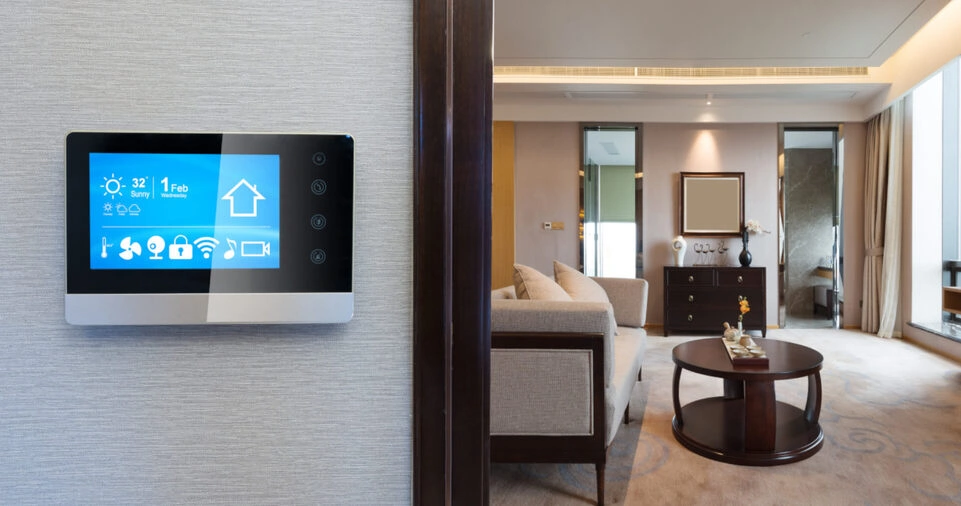The concept of a smart home has revolutionized modern living, offering convenience, security, and energy efficiency.
With the rise of smart technology, setting up a smart home system is no longer a complex task reserved for tech-savvy individuals.
Whether you want to automate your lighting, secure your home with smart locks, or control appliances with voice commands, a well-integrated smart home system makes life easier and more efficient.
However, a successful smart home setup requires careful planning and the right choice of devices.
From selecting a smart home ecosystem to ensuring seamless connectivity, each step plays a crucial role in optimizing your home automation experience.
In this detailed guide, we will walk you through the step-by-step process of setting up a smart home system effortlessly.
We will explore various smart home platforms, essential devices, automation techniques, and security measures to help you build a system that meets your needs.
By the end of this guide, you will have a comprehensive understanding of how to create a fully functional and efficient smart home.
Step by Step Guide to Set Up a Smart Home System Easily

Step 1: Choose a Smart Home Ecosystem
Before purchasing smart devices, it is essential to decide on a smart home ecosystem that will serve as the foundation for your automation setup.
The three leading smart home ecosystems are Amazon Alexa, Google Home, and Apple HomeKit.
Each of these ecosystems offers different levels of compatibility, features, and integrations, making it important to choose one that best fits your requirements.
Amazon Alexa
Amazon Alexa is one of the most popular smart home ecosystems, offering a wide range of compatible devices and seamless voice control.
With Alexa-enabled devices such as Echo Dot, Echo Show, and Echo Studio, users can control smart lights, thermostats, security cameras, and more using voice commands.
Alexa also supports third-party integrations, allowing users to create custom routines and automate daily tasks effortlessly.
Google Home
Google Home, powered by Google Assistant, is another robust smart home platform that offers intelligent voice control and automation features.
With Google Nest devices such as Nest Hub and Nest Mini, users can control smart devices, stream music, and receive personalized notifications.
Google Home integrates well with Android devices and Google services, making it an excellent choice for users who rely on Google apps and services.
Apple HomeKit
Apple HomeKit is ideal for users who prefer a privacy-focused and Apple-centric smart home experience. HomeKit-enabled devices can be controlled using the Apple Home app and Siri voice commands.
While HomeKit offers fewer device integrations compared to Alexa and Google Home, it provides a seamless and secure experience for iPhone, iPad, and Mac users.
Choosing the right ecosystem is crucial as it determines the compatibility of future smart home devices. It is recommended to stick to one ecosystem for better integration and automation capabilities.
Step 2: Get a Smart Home Hub (Optional but Recommended)
A smart home hub acts as a central control unit that connects and manages multiple smart devices.
While some smart devices can function independently, a hub can enhance automation, improve security, and provide better connectivity.
Best Smart Home Hubs
- Amazon Echo (Alexa) – Works as a smart speaker and hub, allowing voice control of multiple devices.
- Google Nest Hub – Features a touch display and supports Google Assistant for smart home control.
- Apple HomePod Mini – Serves as a hub for HomeKit devices and provides secure automation.
- Samsung SmartThings Hub – Connects various smart devices across different brands for unified control.
- Hubitat Elevation – Offers advanced local automation without cloud dependency for better security.
While a hub is not mandatory, it can simplify device management and enable advanced automation features such as controlling lights, locks, and cameras from a single app.
Step 3: Install Smart Devices
Once you have selected a smart home ecosystem and hub, the next step is to install smart devices that enhance convenience and security.
The most essential smart home devices include:
1. Smart Lighting
Smart bulbs and switches allow users to control lighting remotely and set schedules for energy efficiency.
Popular smart lighting brands include:
- Philips Hue – Offers customizable color lighting and dimmable options.
- TP-Link Kasa – Provides affordable and easy-to-install smart bulbs.
- LIFX – Features high-quality, Wi-Fi-enabled bulbs with vibrant colors.
2. Smart Plugs and Outlets
Smart plugs help automate regular appliances by allowing users to turn them on and off remotely.
Some popular options include:
- TP-Link Kasa Smart Plug – Works with Alexa and Google Assistant.
- Wemo Smart Plug – Offers remote control and scheduling.
3. Smart Thermostats
Smart thermostats enhance energy efficiency by automatically adjusting temperature settings based on user preferences.
Recommended brands include:
- Google Nest Thermostat – Learns user habits and optimizes energy use.
- Ecobee SmartThermostat – Includes room sensors for better climate control.
4. Smart Security Cameras
For enhanced home security, smart cameras offer real-time monitoring and motion detection.
Best options include:
- Ring Cameras – Provide motion-activated alerts and cloud storage.
- Arlo Pro – Features high-quality video and weather resistance.
- Blink Cameras – Offer affordable security solutions with long battery life.
5. Smart Door Locks
Smart locks improve home security by allowing keyless entry and remote control.
Top picks include:
- August Smart Lock – Enables smartphone-based entry and auto-lock features.
- Yale Assure Lock – Works with Alexa and Google Assistant.
6. Smart Sensors
Sensors enhance home automation by detecting motion, temperature changes, and leaks.
Recommended sensors include:
- Samsung SmartThings Motion Sensor – Triggers lights and security alerts.
- Fibaro Flood Sensor – Detects water leaks to prevent damage.
Installing these devices strategically based on your lifestyle and requirements will help you create an efficient smart home setup.
Step 4: Connect Devices to Your Wi-Fi
A stable internet connection is vital for seamless smart home functionality.
To ensure optimal performance:
- Use a high-speed internet connection with a minimum of 100 Mbps.
- Position the Wi-Fi router centrally to provide even coverage.
- Consider using a Wi-Fi mesh system if your home has multiple floors or large spaces.
- Assign separate 2.4 GHz and 5 GHz networks for better device management.
A well-optimized network ensures that all smart devices communicate efficiently and perform tasks without interruptions.
Step 5: Set Up Automation & Voice Control
Creating Routines and Schedules
- Set up schedules to turn lights on at sunset and off at bedtime.
- Automate thermostats to adjust temperatures based on daily routines.
- Enable motion sensors to trigger lights in hallways and driveways.
Using Voice Commands
- “Alexa, turn off the lights.”
- “Hey Google, set the temperature to 72 degrees.”
- “Siri, lock the front door.”
Step 6: Secure Your Smart Home
Tips for Better Security
- Use Strong Passwords – Avoid default passwords and enable multi-factor authentication.
- Update Firmware Regularly – Keep devices updated to fix vulnerabilities.
- Secure Your Wi-Fi – Change default router passwords and use encryption protocols.
ALSO READ:
Conclusion
Setting up a smart home system can significantly enhance convenience, security, and energy efficiency.
By selecting the right ecosystem, installing essential devices, and optimizing connectivity, you can create a seamless automation experience.
Follow these steps to transform your home into a smart, connected space that simplifies everyday tasks and enhances overall comfort.

